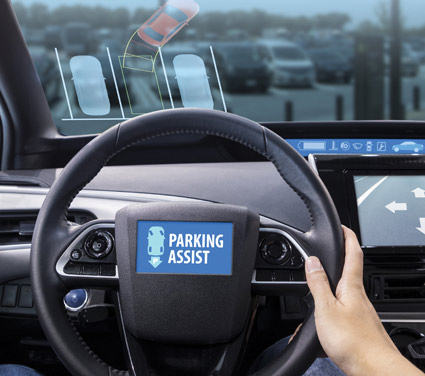
Editor’s Note: Driving is a rite of passage in America, and one that we all fear losing as we age. There are some situations where turning over the keys is inevitable, but in other instances, adding some modifications to your vehicle – or choosing some of the new assistive technologies when you purchase your next ride – can help keep you driving longer.
I know that older relatives in my family have employed many of the suggested adaptations below – including cushions, larger mirrors and purchasing a car with some of the new adaptive technologies – to help them stay on the road. Some items, such as the cushions and mirrors, are easy to find in catalogs and online.
A little research can help make taking to the open road a pleasure for as long as possible!
Driving provides an almost unrivaled level of independence. The ability to travel beyond a neighborhood or even one’s hometown without a chaperone is probably what excites new drivers so much and makes them eager to get their licenses and cars. Elder drivers also may define their independence by their ability to drive. Few things diminish senior dignity and independence faster than losing the ability to drive.
Despite popular misconceptions, elders are some of the safest drivers around. The experts at Hartford Auto Insurance indicate that the number of accidents involving older drivers actually decreases as age increases. It’s the risk factors like medical conditions, medication usage and reduced physical function that increase the risk for accidents and injuries involving older drivers. Thanks to technology and some other well-designed devices, elders may be able to continue driving longer than the aging drivers of years past.
Drive safer with adaptations
The AAA Foundation for Traffic Safety, a nonprofit research and education association, says roughly 90 percent of elders don’t take advantage of simple, often inexpensive features that can greatly improve safety and extend their time behind the wheel.
Listed below are some considerations:
Cushions and seat pads: Cushions do more than just alleviate hip and back pain while sitting. Cushions and pads can raise drivers up and improve their line of sight over the dashboard. Swivel pads can make it easier to enter and exit the car as well.
Adaptive cruise control: This feature can adjust speed automatically to maintain a consistent space between vehicles.
Adaptive headlights: These headlights, also known as steerable headlights, can improve visibility by changing the direction of the light beam with the movement of the steering wheel.
Pedal extenders: Extenders help short drivers reach the pedals while maintaining a safe distance from the steering wheel and potential airbag deployment.
Hand controls: Whether one has sensory changes in the feet from surgery or a medical condition, adaptive hand controls can move the “pedals” up to the steering column.
Blind spot warning and other sensors: Today’s cars can be equipped with any number of sensors that can detect oncoming traffic, cars to the left or right of the vehicle, items or cars behind the vehicle when reversing, and even if the vehicle has drifted out of the lane. These are all great safety features for any driver, but may be especially helpful to seniors.
Parking assist: Parking assist technology can steer the vehicle into a space with little input from the driver.
Voice control: Avoiding distractions and keeping hands on the wheel is enhanced by voice controls, which can be set up to do things like turn on the radio or adjust climate control.
Convex mirrors: Special mirrors increase the field of vision.
Elders have many tools available to make driving safer and more comfortable, which can prolong their years behind the wheel.
This article is courtesy of Metro Creative Graphics